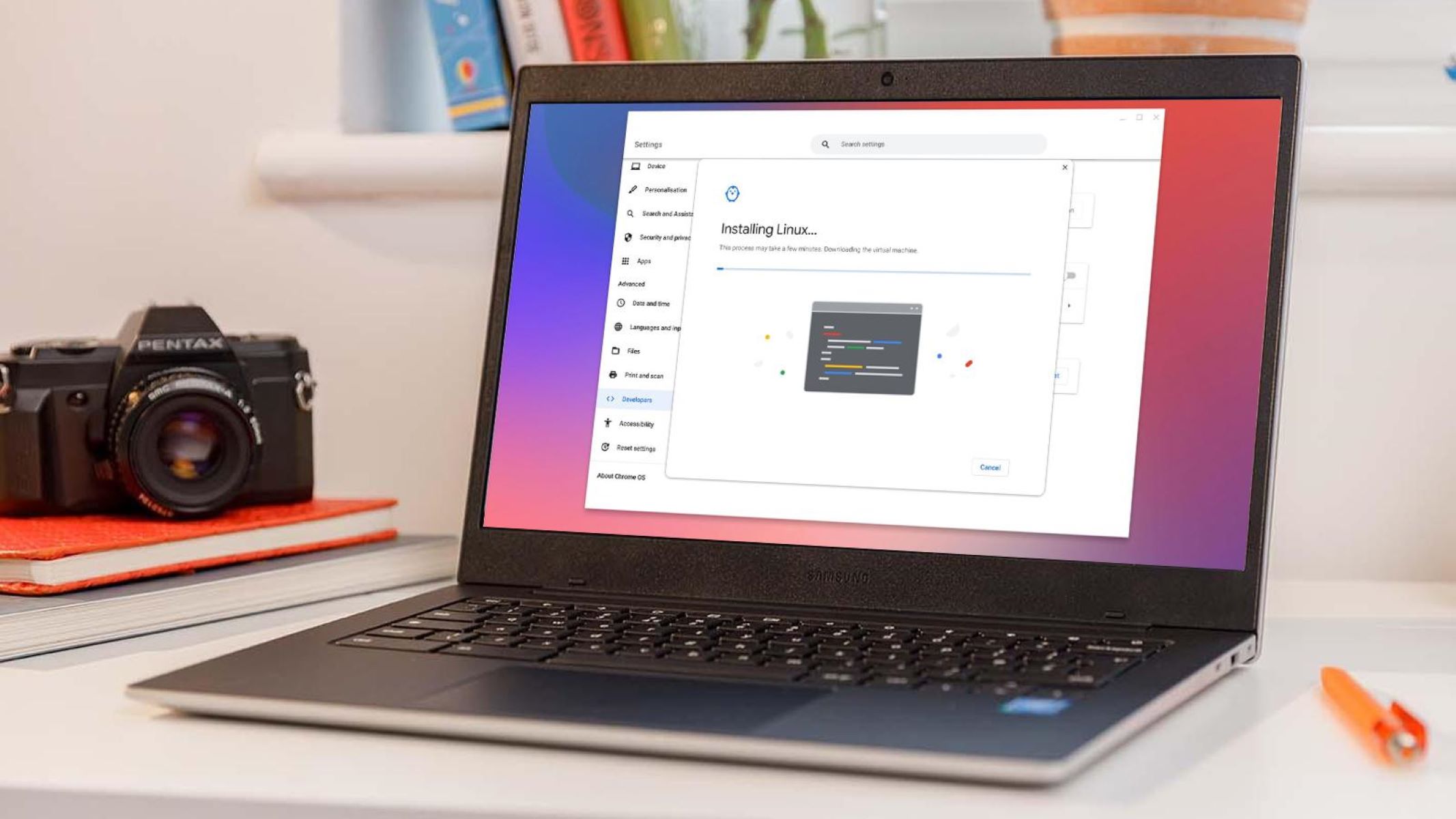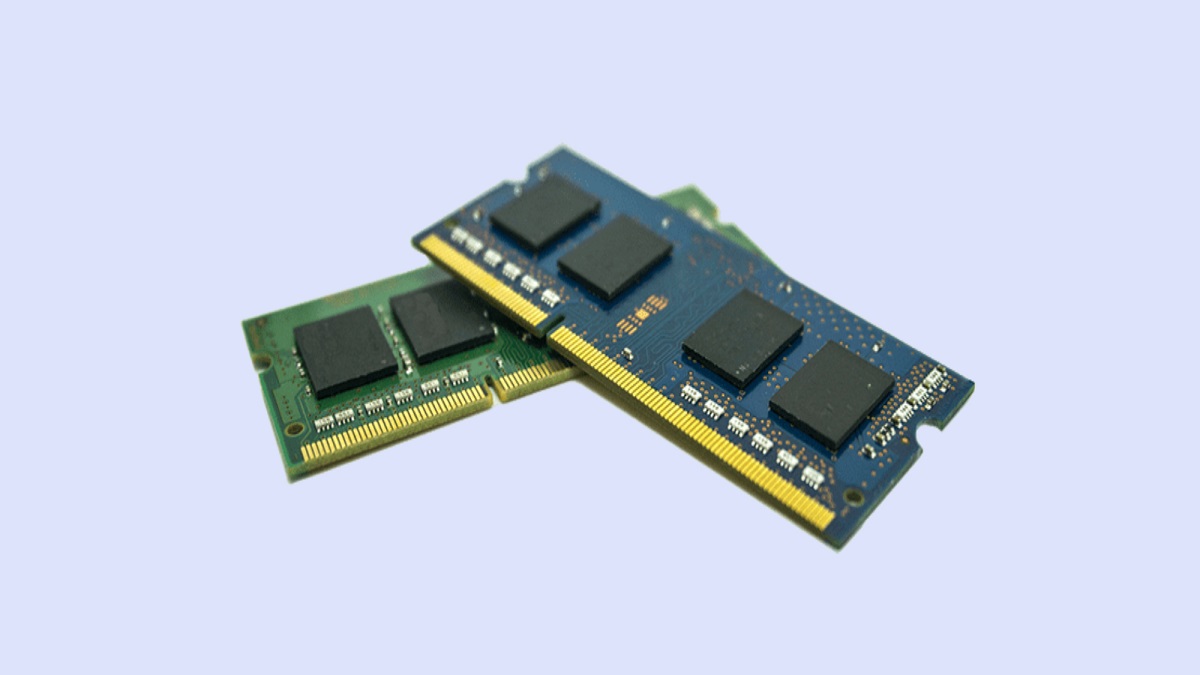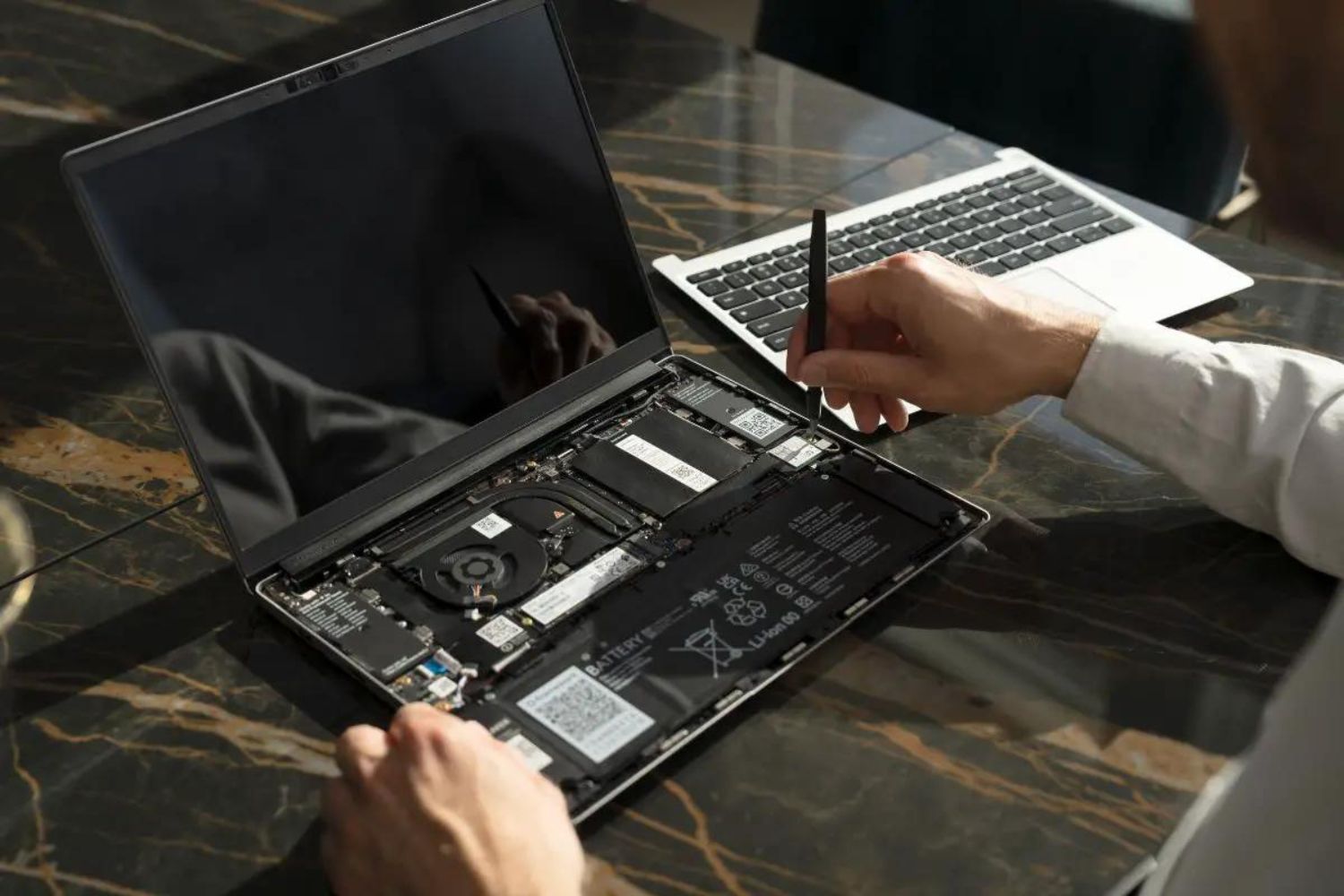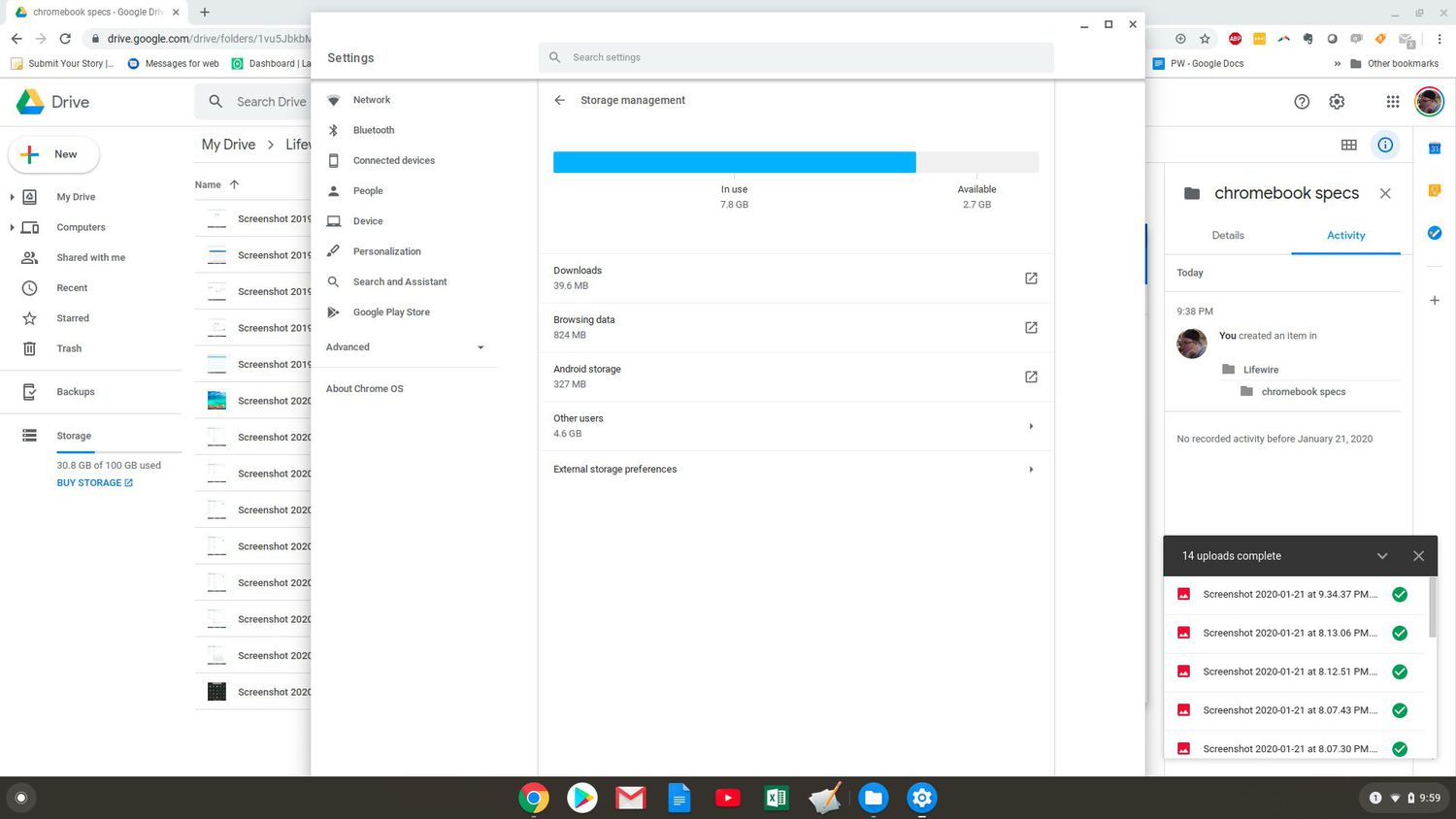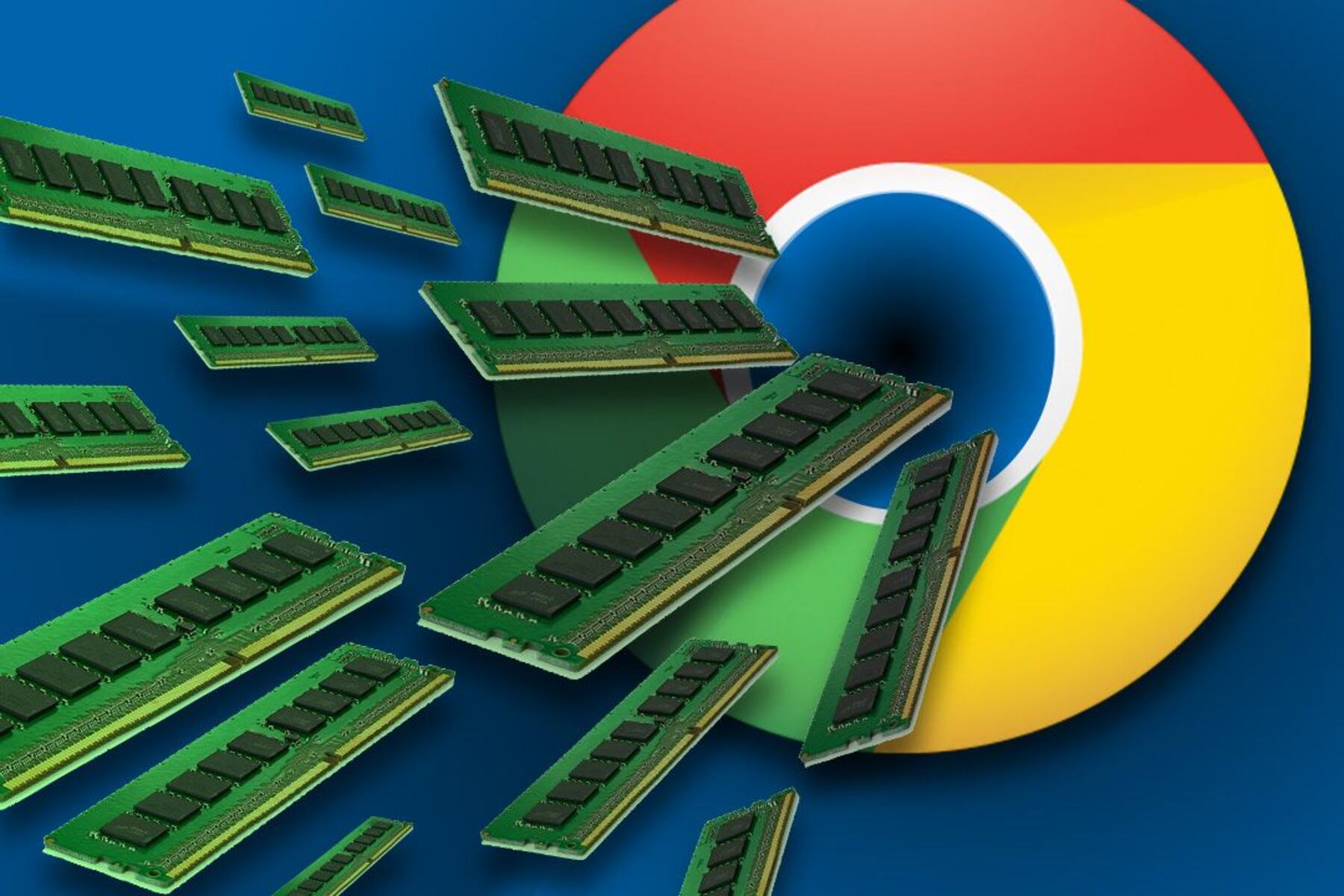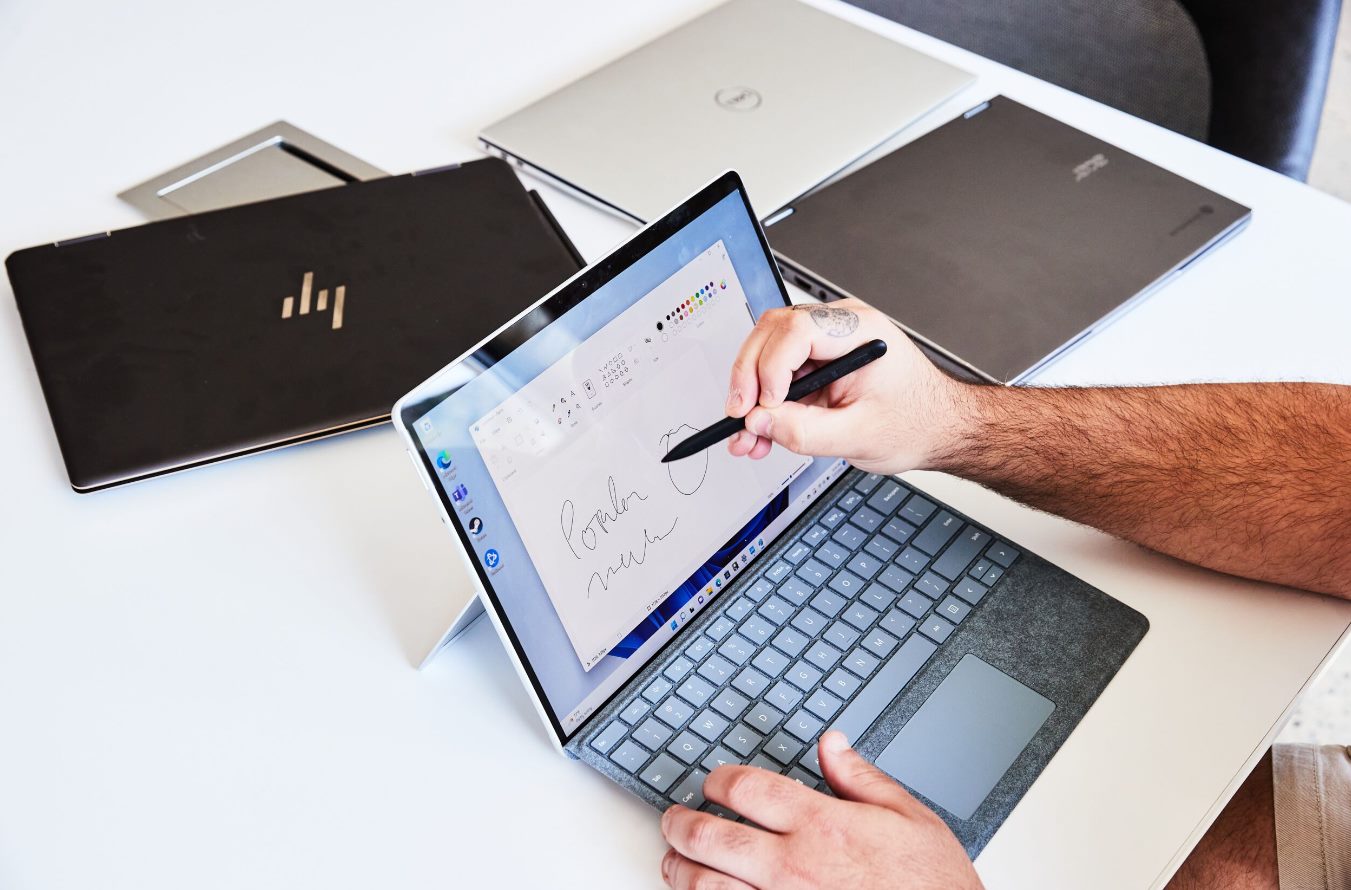Introduction
Welcome to our guide on how to give Chrome more RAM! As avid users of Google Chrome, we know firsthand how frustrating it can be when the browser starts to slow down, freeze, or crash due to high RAM usage. In today’s digital world, where we rely heavily on web-based applications and multitask with multiple tabs open, having enough RAM is essential for a smooth browsing experience.
Google Chrome is known for its powerful features and robust functionality, but it can consume a significant amount of RAM, especially when you have several tabs open or run RAM-intensive applications. When Chrome exceeds your available RAM capacity, it can lead to sluggish performance, excessive memory usage, and even impact the overall performance of your computer.
This guide aims to help you understand why Chrome uses so much RAM and provide practical solutions to give it more RAM so that it can perform at its peak. We will explore different techniques to optimize Chrome’s RAM usage, provide step-by-step instructions, and share some helpful tips and tricks that can significantly enhance your browsing experience.
Whether you are using Chrome for work, research, or leisure, this guide will empower you to take control of Chrome’s RAM usage and ensure optimal performance. So, let’s dive in and explore the reasons behind Chrome’s RAM-hungry nature and the steps we can take to allocate more RAM to this popular browser.
Understanding Chrome’s RAM Usage
Google Chrome has gained popularity for its speed, reliability, and extensive range of features. However, one trade-off for this exceptional performance is its memory usage. Chrome is notorious for being a memory hog, often using a significant amount of RAM compared to other browsers.
One reason for Chrome’s high RAM usage is its multi-process architecture. Each tab, extension, and plugin in Chrome runs in its own separate process. While this architecture enhances stability and security, it also means that Chrome requires more memory to run efficiently.
Another factor contributing to Chrome’s memory consumption is its pre-rendering feature. Chrome pre-loads web pages in the background to reduce the loading time when a user clicks on a link. However, this pre-rendering process uses additional memory resources, especially if you have multiple open tabs or frequently switch between them.
Additionally, Chrome’s extensions and plugins can significantly impact its RAM usage. Extensions, while providing valuable functionality, can consume a considerable amount of memory, especially those that constantly run in the background or are poorly optimized.
Furthermore, web applications have become more resource-intensive over time, utilizing more complex code, multimedia elements, and dynamic content. As a result, websites with heavy graphical content or numerous scripts can put a strain on Chrome’s memory resources.
Now that we have a better understanding of why Chrome uses so much RAM, it’s essential to recognize the potential consequences of inadequate memory. When Chrome exceeds the available RAM, it starts to use the computer’s hard drive as “virtual memory” or “swap space,” resulting in slower performance and potential freezing or crashing of the browser.
With this understanding, it becomes crucial to optimize Chrome’s RAM usage and ensure that it has enough memory to operate smoothly. In the following sections, we will explore various methods to allocate more RAM to Chrome, improve its performance, and enhance your browsing experience.
Why You Might Need More RAM
Having sufficient RAM is vital for ensuring smooth and efficient performance, especially when using memory-intensive applications like Google Chrome. Here are a few reasons why you might need more RAM:
1. Multiple Tabs and Applications: If you are someone who frequently multitasks with multiple Chrome tabs open, along with other resource-demanding applications, you are likely to experience performance issues. Each open tab consumes a portion of your computer’s RAM, and when the available memory is limited, it can lead to sluggishness, delays, and even system crashes.
2. RAM-Hungry Websites: Modern websites tend to be more resource-intensive, incorporating complex layouts, high-resolution images, multimedia content, and interactive elements. When browsing such websites, they can quickly consume a significant amount of RAM, especially if you have multiple tabs open. Insufficient RAM may result in slow page loading, choppy scrolling, and unresponsive interactions.
3. Memory-Intensive Applications: Aside from browsing, if you use RAM-intensive applications like photo or video editing software, 3D modeling tools, or virtual machines, having more RAM is essential. These applications require ample memory to function smoothly and efficiently. If your system’s RAM is restricted, the performance of these applications can be severely affected.
4. Improved Overall System Performance: Increasing the amount of RAM in your computer not only benefits your browsing experience but also enhances the performance of your entire system. With more RAM, your operating system can handle multiple tasks simultaneously, switch between programs seamlessly, and reduce the strain on other hardware components.
5. Future-Proofing: It’s always a good idea to plan for the future. As technology advances and software becomes more demanding, the need for additional RAM will likely increase. By upgrading your RAM now, you can future-proof your system and ensure it can handle upcoming updates and applications without any performance issues.
Understanding why you might need more RAM is crucial in evaluating your current system’s capabilities and identifying any limitations. By recognizing the demands on your computer’s memory, you can make informed decisions on how to allocate more RAM to Chrome and optimize its performance.
Checking Your Current RAM Usage
Before diving into the steps to allocate more RAM to Chrome, it’s important to assess your current RAM usage to determine if there is a need for additional memory. Fortunately, checking your RAM usage is a straightforward process. Here’s how you can do it:
1. Task Manager: The Task Manager is a built-in utility in Windows that provides real-time information about your system’s performance, including memory usage. To open the Task Manager, simply right-click on the taskbar and select “Task Manager” from the context menu. In the Task Manager window, navigate to the “Performance” tab, where you will find the information about your computer’s memory usage, including the total amount of RAM installed, the amount in use, and the amount available.
2. Activity Monitor: On macOS, you can use the Activity Monitor to check your RAM usage. To access it, go to the “Applications” folder, then to the “Utilities” folder, and open the Activity Monitor. In the Activity Monitor window, click on the “Memory” tab, which will display information about your system’s memory usage, including the physical memory, memory used, and memory pressure.
By checking your current RAM usage, you can determine if your system’s memory is sufficient for your needs or if you need to allocate more RAM to Chrome. If you notice that the memory usage is consistently high, and Chrome is one of the main culprits, it’s a sign that allocating more RAM to Chrome can greatly improve its performance.
Now that you have a clear understanding of your system’s RAM usage, it’s time to explore the steps to allocate more RAM to Chrome and optimize its performance. In the following sections, we will guide you through the necessary adjustments in Chrome’s settings, as well as share additional tips and tricks to reduce RAM usage, ensuring a seamless browsing experience.
Steps to Allocate More RAM to Chrome
Allocating more RAM to Chrome can significantly improve its performance and prevent slowdowns caused by excessive memory usage. Fortunately, there are several steps you can follow to adjust Chrome’s settings and ensure it utilizes more of your available memory. Here’s how:
1. Open Chrome’s Advanced Settings: Start by opening Google Chrome and clicking on the three-dot menu icon in the top-right corner. From the drop-down menu, select “Settings.” Scroll down to the bottom and click on “Advanced” to expand the advanced settings options.
2. Locate the “System” Section: In the advanced settings, find the “System” section and click on “Open proxy settings.” This will open the Windows Internet Properties dialog box.
3. Access the System Configuration: In the Windows Internet Properties dialog box, click on the “Advanced” tab. Under the “Performance” section, click on the “Settings” button to open the Performance Options dialog box.
4. Adjust the Virtual Memory Settings: In the Performance Options dialog box, navigate to the “Advanced” tab. Under the “Virtual memory” section, click on the “Change” button. Uncheck the “Automatically manage paging file size for all drives” option.
5. Allocate More Virtual Memory: Select the drive where your operating system is installed (usually the C: drive) and choose the “Custom size” option. Enter a higher value for the “Initial size” and “Maximum size” of the virtual memory. A recommended value is 1.5 times the amount of physical RAM in your system. Click on “Set” and then “OK” to save the changes.
6. Restart Chrome: After modifying the virtual memory settings, close all instances of Chrome and restart it to apply the changes. Chrome will now have access to a greater portion of virtual memory, which will help alleviate high RAM usage.
By following these steps, you can allocate more virtual memory to Chrome, allowing it to utilize additional resources and reducing the strain on your system’s physical RAM. This should result in improved performance and smoother browsing experiences.
Next, we’ll explore other methods to optimize Chrome’s RAM usage, including the use of extensions, clearing cache and browsing data, and closing unnecessary tabs and extensions. These techniques, combined with increasing the allocated RAM, will help you maximize Chrome’s potential and ensure a seamless browsing experience.
Adjusting Chrome’s RAM Settings
In addition to allocating more virtual memory, you can also adjust Chrome’s internal settings to optimize its RAM usage. By tweaking these settings, you can ensure that Chrome effectively utilizes the available memory resources. Here’s how to adjust Chrome’s RAM settings:
1. Access Chrome’s Experimental Features: Type “chrome://flags” in the address bar and press Enter. This will take you to Chrome’s experimental features page, where you can enable or disable certain settings not available in the regular settings menu.
2. Search for “Proactive Tab Freeze and Discard”: In the search bar on the Chrome flags page, type “Proactive Tab Freeze and Discard.” This feature allows Chrome to automatically freeze and discard inactive tabs to free up memory. Enable this feature by selecting “Enabled” from the drop-down menu.
3. Enable “Site Isolation”: Search for “Site Isolation” in the Chrome flags page. This feature isolates individual websites in separate processes, enhancing security and reducing memory usage. Enable site isolation by selecting “Enabled” from the drop-down menu.
4. Configure “Number of Raster Threads”: Search for “Number of Raster Threads” in the Chrome flags page. This setting determines the number of CPU threads used for rendering web content. Increase the value to allocate more CPU resources to Chrome, which can help reduce overall RAM usage.
5. Relaunch Chrome: After adjusting the desired settings, click on the “Relaunch” button at the bottom of the Chrome flags page to restart the browser and apply the changes.
By enabling features like Proactive Tab Freeze and Discard and Site Isolation, you can improve Chrome’s memory management and reduce unnecessary memory consumption. Additionally, configuring the number of raster threads can help optimize CPU usage, which can indirectly impact RAM usage.
It’s worth noting that the Chrome flags page contains experimental features that may still be under development or unstable. While they can help enhance Chrome’s performance, there is a slight risk of encountering unexpected behavior or compatibility issues. If you experience any problems after enabling a flag, you can easily revert the changes by selecting the “Default” option from the drop-down menu or disabling the feature altogether.
In the following sections, we’ll explore additional tips and tricks to further optimize Chrome’s RAM usage. These techniques, coupled with adjusting Chrome’s settings, will allow you to maximize its performance and enjoy a smoother browsing experience.
Using Extensions to Optimize RAM Usage
Extensions can greatly enhance Chrome’s functionality, but they can also contribute to increased RAM usage. Some extensions constantly run in the background, consuming memory even when not actively in use. However, there are ways to optimize the RAM usage of extensions to ensure they don’t unnecessarily strain your system’s resources. Here’s how:
1. Review and Disable Unnecessary Extensions: Open Chrome’s menu and go to “Extensions.” Evaluate each installed extension and disable any that you no longer use or find unnecessary. This reduces the memory footprint of Chrome and improves its overall performance.
2. Use Lightweight or Alternatives: Some extensions have lightweight versions available or alternative options that consume fewer resources. Consider using these versions or alternatives to minimize RAM usage. Look for extensions that are well-optimized and have positive user reviews regarding their impact on memory.
3. Disable Background Processes: Some extensions run in the background even when not actively being used. Check for options in the extension settings to disable background processes or limit their activity, reducing their impact on RAM usage when not necessary.
4. Utilize Extension Managers: Extension managers like “The Great Suspender” or “OneTab” can help optimize RAM usage by suspending or grouping inactive tabs, respectively. These tools prevent tabs from consuming excessive memory and allow you to easily restore them when needed.
5. Periodically Review and Remove Unused Extensions: Regularly assess your extensions and remove any that are no longer in use. Over time, you may accumulate extensions that you no longer need or have become obsolete. Removing these extensions will free up memory and improve Chrome’s performance.
By managing your extensions effectively, you can optimize Chrome’s RAM usage and prevent unnecessary strain on your system. Only keep the extensions that are essential and actively used, ensuring a more efficient browsing experience.
In the next sections, we’ll explore additional ways to reduce Chrome’s RAM usage, including clearing cache and browsing data, closing unnecessary tabs and extensions, and other helpful tips and tricks.
Clearing Cache and Browsing Data
Over time, Chrome accumulates temporary files, cached data, and browsing history, which can occupy a significant amount of disk space and contribute to increased RAM usage. Clearing the cache and browsing data regularly not only frees up storage but also helps optimize Chrome’s performance. Here’s how to clear your cache and browsing data:
1. Access Chrome’s Clear Browsing Data: Open Chrome’s menu and go to “More tools” > “Clear browsing data.” Alternatively, you can press “Ctrl + Shift + Delete” (Windows/Linux) or “Command + Shift + Delete” (Mac) to directly access the Clear Browsing Data settings.
2. Select the Data to Clear: In the Clear Browsing Data settings, you can choose what types of data to clear. At a minimum, select “Cached images and files” and “Browsing history.” You can also choose to clear other items like cookies, download history, and more based on your preferences.
3. Choose the Time Range: Select the time range for which you want to clear the data. If you want to clear all data, choose “All time.” Alternatively, you can select a specific time period, such as the past hour, day, week, or month.
4. Click on “Clear Data”: After selecting the desired data options and time range, click on the “Clear Data” button to initiate the removal process. Chrome will clear the selected data, freeing up disk space and potentially reducing RAM usage.
Clearing the cache and browsing data regularly not only helps optimize Chrome’s performance but also ensures your browsing experience remains secure and private. Cache and browsing data may contain sensitive information or outdated content that could potentially pose a security risk if left unattended.
By making this a routine practice, you can keep Chrome running smoothly and maintain a clutter-free browsing environment. In the next sections, we’ll explore additional steps to reduce RAM usage, including closing unnecessary tabs and extensions, as well as other helpful tips and tricks.
Closing Unnecessary Tabs and Extensions
Having multiple tabs and extensions open in Chrome simultaneously can significantly contribute to increased RAM usage. Each open tab and active extension consumes resources, slowing down the browser and potentially impacting overall system performance. Closing unnecessary tabs and disabling unnecessary extensions is an effective way to reduce memory usage and optimize Chrome. Here’s how you can do it:
1. Identify Unnecessary Tabs: Take a look at the tabs you have open in Chrome and identify any that you no longer need or haven’t used in a while. Consider closing tabs that you no longer actively use or are not relevant to your current browsing session.
2. Use Bookmarks: If you come across a webpage that you want to revisit later but don’t need to keep open, save it as a bookmark instead of leaving it as a tab. Bookmarks allow you to easily access and reopen pages without keeping them loaded, freeing up valuable memory.
3. Disable or Remove Extensions: Open Chrome’s menu and go to “Extensions.” Evaluate each installed extension and disable or remove any that you don’t regularly use or find unnecessary. Disabling or removing extensions reduces their impact on memory usage and improves Chrome’s performance.
4. Use Incognito Mode: If you need to open multiple tabs for a specific task, consider using Chrome’s Incognito mode. Incognito mode prevents Chrome from storing browsing history, cookies, and other data, which can help reduce memory usage.
By closing unnecessary tabs and disabling or removing unused extensions, you can significantly reduce RAM usage and improve Chrome’s performance. It’s always a good practice to keep only the tabs and extensions that you actively need, allowing Chrome to allocate memory more efficiently.
In the next sections, we’ll explore additional tips and tricks to further optimize Chrome’s RAM usage, ensuring a seamless and efficient browsing experience.
Other Tips and Tricks to Reduce RAM Usage in Chrome
In addition to the previous techniques mentioned, there are other tips and tricks you can implement to further optimize Chrome’s RAM usage. These methods can help reduce memory consumption and improve overall performance. Here are some additional tips to consider:
1. Enable Hardware Acceleration: Chrome’s hardware acceleration feature offloads some of the browser’s processing tasks to your computer’s GPU, reducing the strain on the CPU and overall RAM usage. To enable hardware acceleration, go to Chrome’s settings, click on “Advanced,” and under the “System” section, toggle on “Use hardware acceleration when available.”
2. Limit Open Tabs: Keeping too many tabs open can quickly consume a significant amount of memory. Try to limit the number of tabs open simultaneously, and consider using bookmarking or a tab management extension to keep your session organized and efficient.
3. Disable Auto-Refresh: Auto-refreshing web pages can consume unnecessary memory and resources. Consider disabling auto-refresh for websites that aren’t essential or require constant updates. You can use extensions like “Disable HTML5 Autoplay” to prevent auto-playing videos and animations.
4. Use Lightweight Alternatives: Some websites and applications have lightweight versions or alternatives that use fewer resources. For instance, you can use mobile versions of websites or desktop applications that are less resource-intensive, reducing RAM usage in the process.
5. Regularly Update Chrome: Keeping Chrome up to date ensures that you have the latest performance enhancements and bug fixes. These updates can contribute to better memory management and overall optimization, so make it a habit to regularly check for and install updates.
6. Restart Chrome Regularly: A simple but effective way to free up memory and clear any accumulated processes is to restart Chrome periodically. Closing and reopening the browser allows it to start fresh, reducing RAM usage and improving performance.
By implementing these tips and tricks, you can further optimize Chrome’s RAM usage and ensure a smoother browsing experience. Experiment with different techniques to find what works best for your needs and preferences.
Now that you have a range of techniques at your disposal to optimize Chrome’s RAM usage, you can enjoy a faster, more responsive browsing experience. By following these steps and adopting good browsing habits, you can make the most of your system’s resources and ensure that Chrome performs at its best.
Conclusion
Optimizing Chrome’s RAM usage is essential for ensuring a smooth and efficient browsing experience. In this guide, we have explored various methods to allocate more RAM to Chrome, reduce memory consumption, and improve overall performance.
We started by understanding the reasons behind Chrome’s high RAM usage, including its multi-process architecture, pre-rendering feature, and the impact of extensions. By comprehending these factors, we gained insight into why allocating more RAM is necessary.
We then discussed how to check your current RAM usage using Task Manager or Activity Monitor and explained the steps to increase the allocated virtual memory for Chrome. Adjusting Chrome’s RAM settings, such as enabling features like Proactive Tab Freeze and Discard or Site Isolation, and configuring the number of raster threads, can also aid in optimizing memory usage.
We emphasized the importance of managing extensions effectively by disabling or removing unnecessary ones, using lightweight alternatives, and utilizing extension managers to optimize RAM usage. Clearing cache and browsing data, as well as closing unnecessary tabs, further contribute to reducing memory consumption.
Additionally, we provided several other helpful tips and tricks to reduce RAM usage in Chrome, such as enabling hardware acceleration, limiting open tabs, disabling auto-refresh, and regularly updating the browser.
By incorporating these strategies into your browsing routine, you can significantly enhance Chrome’s performance, reduce memory usage, and enjoy a seamless browsing experience.
Remember, optimizing Chrome’s RAM usage is an ongoing process. Regularly assess your system’s resources, monitor memory usage, and adjust settings as needed to ensure smooth operation.
Now that you are equipped with these valuable techniques, go ahead and implement them to give Chrome more RAM and unlock its full potential.











